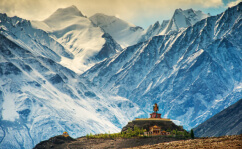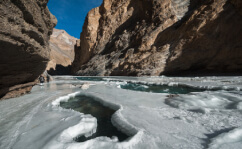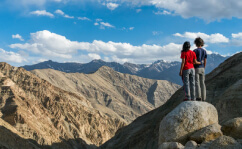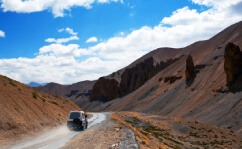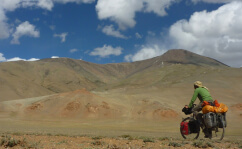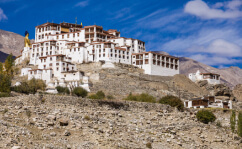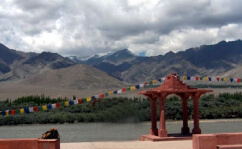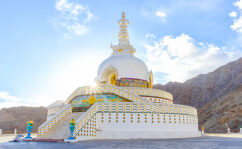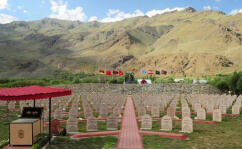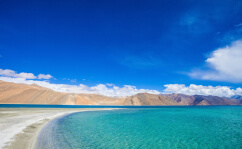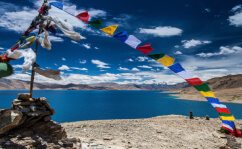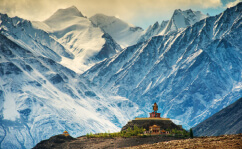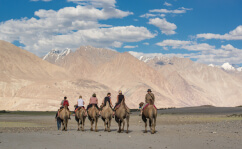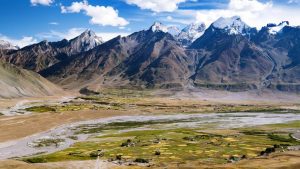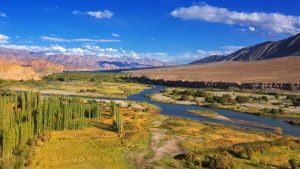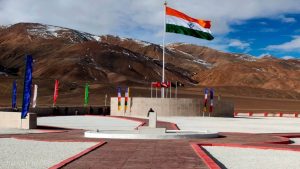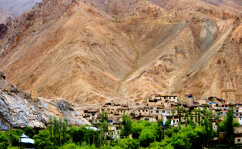About Brief Introduction of Ladakh
A brief introduction of Ladakh is given below that sums up everything you need to know about this newly formed Indian Union Territory:
- Capital : Leh
- Number of Districts in Ladakh : 2
- Names of the Districts in Ladakh : Leh & Kargil
- Area : 59,146 km2 (22,836 sq mi)
- Population : 274,289
- Highest elevation : Saltoro Kangri, 7742 m (25400 ft)
- Lowest elevation : Indus River, 2550 m (8370 ft)
- Languages : Official (Hindi, English) & Spoken (Ladakhi, Urdu)
- Largest Town : Leh
The history of Ladakh can be traced in a better way after the 9th Century. The Kingdom of Ladakh was established around 950 CE when the early Tibetan Empire collapsed. Independent kingdoms were formed under independent rulers that mostly were from Tibetan royal family.
Best Selling Ladakh Tour Packages
The History of Ladakh Before the 9th Century
The earliest population of Ladakh has been asserted to be that of Dards or Brokpas. Many ancient accounts by the Greek historians, Herodotus and Megasthenes, and the admiral of Alexander the Great, Nearchus have confirmed the existence of the Brokpas (Dards) in Ladakh. An interesting fact tells that Herodotus also mentioned the gold-digging ants of central Asia, which is also mentioned in connection with the Dardi people of Ladakh by Nearchus. The Kharoshti inscription discovered near Khalatse Bridge tells that Ladakh in the 1st Century was under the rule of the Kushan Empire.
The Formation of Ladakh Kingdom and the Inhabitation of Tibetans
Nyima-Gon, a representative of the ancient Tibetan royal house founded the first Ladakh dynasty after the breakup of the Tibetan Empire in 842 CE. From this time, the Tibetan population started to cohabit with the Brokpas. So, the total population of Ladakh wasn’t only made of Brokpas but also the Tibetan people. During this era, Buddhism and Tibetan religion of Bon were also spread across the region. An early king, Lde-dpal-hkhor-btsan (c. 870 -900) was responsible for the construction of several monasteries in Ladakh, including the Upper Manahris Monastery.
The Rise of Namgyal Dynasty
Ladakh was divided into two parts: Upper Ladakh and Lower Ladakh. Upper Ladakh was ruled by King Takbumde from Leh and Shey, and Lower Ladakh was ruled by King Takpabum from Basgo and Temisgam. Later, Bhagan, a king from Lower Ladakh of the Basgo Dynasty, defeated the king of Leh and took on the surname Namgyal (victorious), and founded a new dynasty which still survives today.
About Sengge Namgyal
During the reign of Sengge Namgyal, who was known as the Lion King, constructions in Ladakh were in full swing. He commissioned the construction of many monasteries in Ladakh including the popular Hemis Monastery. Sengge Namgyal also ordered the construction of the Leh Palace and moved the headquarters of his kingdom from Shey Palace to this newly constructed one. Under Sengge, the kingdom further expanded to Zanskar and Spiti. He was later defeated by the Mughals who had already conquered Kashmir and Baltistan.
About Deldan Namgyal and the Involvement of the Mughals
Deldan Namgyal, the successor of Sengge Namgyal had to make a treaty with the Mughals and as a symbol of it, he allowed Mughal Emperor, Aurangzeb to build a mosque in Leh. Later, with the help of the Mughal Army under Fidai Khan, Deldan Namgyal defeated the 5th Dalai Lama invasion in the plains of Chargyal, which is situated between Nimoo and Basgo.
Inclusion of Ladakh in the Princely State of Jammu & Kashmir
After the collapse of the Mughal Empire by the beginning of the 19th Century, Raja Gulab Singh, under the suzerainty of the Sikh monarch Ranjit Singh, sent General Zorawar Singh for invading Ladakh in 1834. The then ruler of Ladakh, Tshespal Namgyal was dethroned and exiled to Stok by General Zorawar Singh and Ladakh came under the Dogra Rule. Later, Ladakh was incorporated into the princely state of Jammu & Kashmir under British Rule.
Inclusion of Ladakh in the Indian State of Jammu & Kashmir
After the independence of India in 1947, Ladakh was made a part of the Indian state of Jammu & Kashmir. Leh, which is currently the capital of Ladakh, was initially chosen as the headquarters of Ladakh Division then. However, after facing some protest, Leh and Kargil were announced to jointly serve as the divisional headquarters.
Ladak as the Indian Union Territory
In August 2019, a reorganisation act was passed by the Parliament of India which had a provision to reconstitute Ladakh as a union territory, separate from Jammu & Kashmir. On 31 October 2019, Ladakh was declared a separate Union Territory which is to be administered by a Lieutenant Governor.

 +91-9212553109
+91-9212553109 Plan Your trip
Plan Your trip




